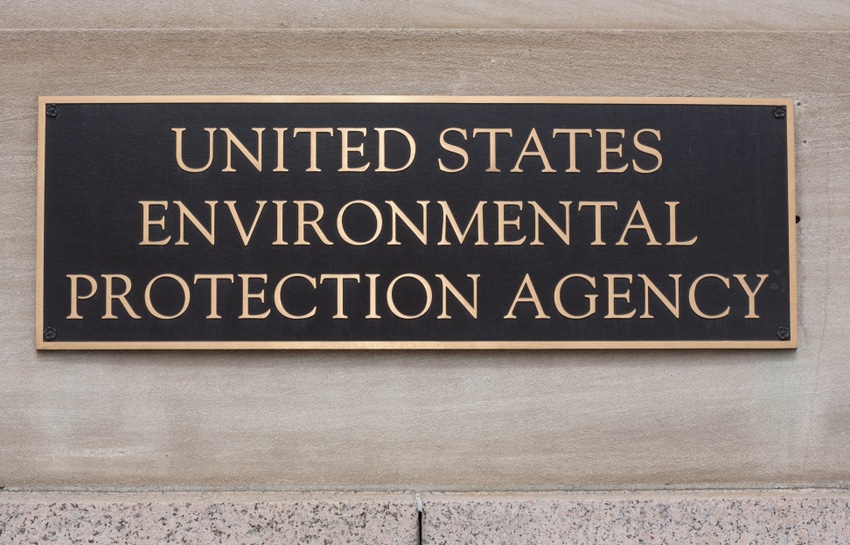EPA proposes 3% bump in RFS blending mandate
Biofuel supporters say proposal falls short if nothing is done to address misuse of small refiner waiver.

The U.S. Environmental Protection Agency issued proposed volume requirements under the Renewable Fuel Standard (RFS) program for cellulosic biofuels, advanced biofuels and total renewable fuels for the 2019 calendar year. EPA proposed increasing the renewable volume obligations (RVOs) of the RFS for 2019 by 3% -- from 19.29 billion gal. to 19.88 billion gal.
The proposal would maintain the current 15 million gal. target for corn-based ethanol and increase cellulosic and advanced biofuel requirements by 100 million gal. and 600 million gal., respectively.
Secretary of Agriculture Sonny Perdue released audio commentary regarding the EPA’s 2019 biofuel targets and stated that the U.S. Department of Agriculture is “going to hold very firmly to the fact that if we have an RVO, it ought to be an honest number and not one that has a leak out the back door with waivers that are not accounted for.”
Biofuel supporters said the RVO numbers offer a mixed bag.
Brooke Coleman, executive director of Advanced Biofuels Business Council, said, “On its face, the EPA proposal is promising. It reverses last year’s rollback of cellulosic biofuels, and it opens growth opportunities for advanced producers who are establishing new revenue streams for rural America, but until there is some check on the EPA’s abuse of waivers, regulatory uncertainty will continue to threaten investments in advanced biofuels.”
Emily Skor, Growth Energy chief executive officer, said even though EPA proposed 15 billion gal. for conventional biofuels, that still isn’t a number the industry can count on. “This plan fails to ensure those gallons will, in fact, be blended. By neglecting to reallocate gallons lost to waivers, the EPA is doubling down on another year of an estimated 1.5 billion gal. in demand destruction.”
“This is a status-quo proposal for ethanol, and the status quo is bad,” Iowa Renewable Fuels Assn. executive director Monte Shaw said in a statement.
“The ethanol number isn’t worth the paper it’s written on so long as (EPA Administrator) Scott Pruitt is granting small refinery exemptions left and right – even beyond what the Department of Energy recommends,” Shaw added. "With Pruitt in charge of the EPA, the ethanol number, in reality, is more like 13.5 billion gal., which is well below what President (Donald) Trump promised and what it takes to grow demand. Rural America is already suffering from low commodity prices and tariff wars, and today’s proposal is a missed opportunity to provide good news for consumers and farmers."
Skor noted that the proposed RVOs also fail to restore the volumes lost to waivers for 2016, despite a court ruling last July that requires EPA to return 500 million gal. of biofuel demand. “The EPA cannot continue to enrich the largest oil companies and refiners at the expense of struggling U.S. farmers,” she said.
Renewable Fuels Assn. president Bob Dinneen said in a statement it would be a “hollow and cynical exercise” to praise EPA for the RVO levels.
“The proposal means nothing until EPA reallocates those lost gallons and sets forth a more transparent and rational process that assures small refinery waivers are not abused or granted unnecessarily. Unfortunately, over the past few days, Administrator Pruitt buckled yet again to pressure from the oil industry and removed language from this proposal that would have indicated the agency’s interest in addressing what has clearly become an abused process,” Dinneen said.
Biodiesel bumped
The 2020 proposed level for biodiesel volumes was more positive. After being flatlined by EPA for the last two years, the 2020 proposal calls for a 330 million gal. increase.
EPA proposed the RVO for the biomass-based diesel category to increase from 2.1 billion gal. in 2019 to 2.43 billion gal. in 2020. The advanced biofuel category, for which biodiesel also qualifies, would increase slightly from 4.29 billion gal. in 2018 to 4.88 billion gal. in 2019 under EPA’s proposal.
“This is a positive signal for our industry, and we’re pleased the EPA has acknowledged our ability to produce higher volumes. We’ve consistently demonstrated that we can do much more,” said Kurt Kovarik, vice president of federal affairs at the National Biodiesel Board.
“It was refreshing to see the biodiesel level bumped up,” Shaw stated. “Congress created this RFS category and intended to see it grow. It has been slow-walked or stalled for the past several years. With biodiesel as the advanced biofuel of choice, its real demand is impacted more by the total advanced number, but the biodiesel-specific level serves as a useful floor and should boost investor and producer confidence to keep growing the young industry.”
About the Author(s)
You May Also Like





